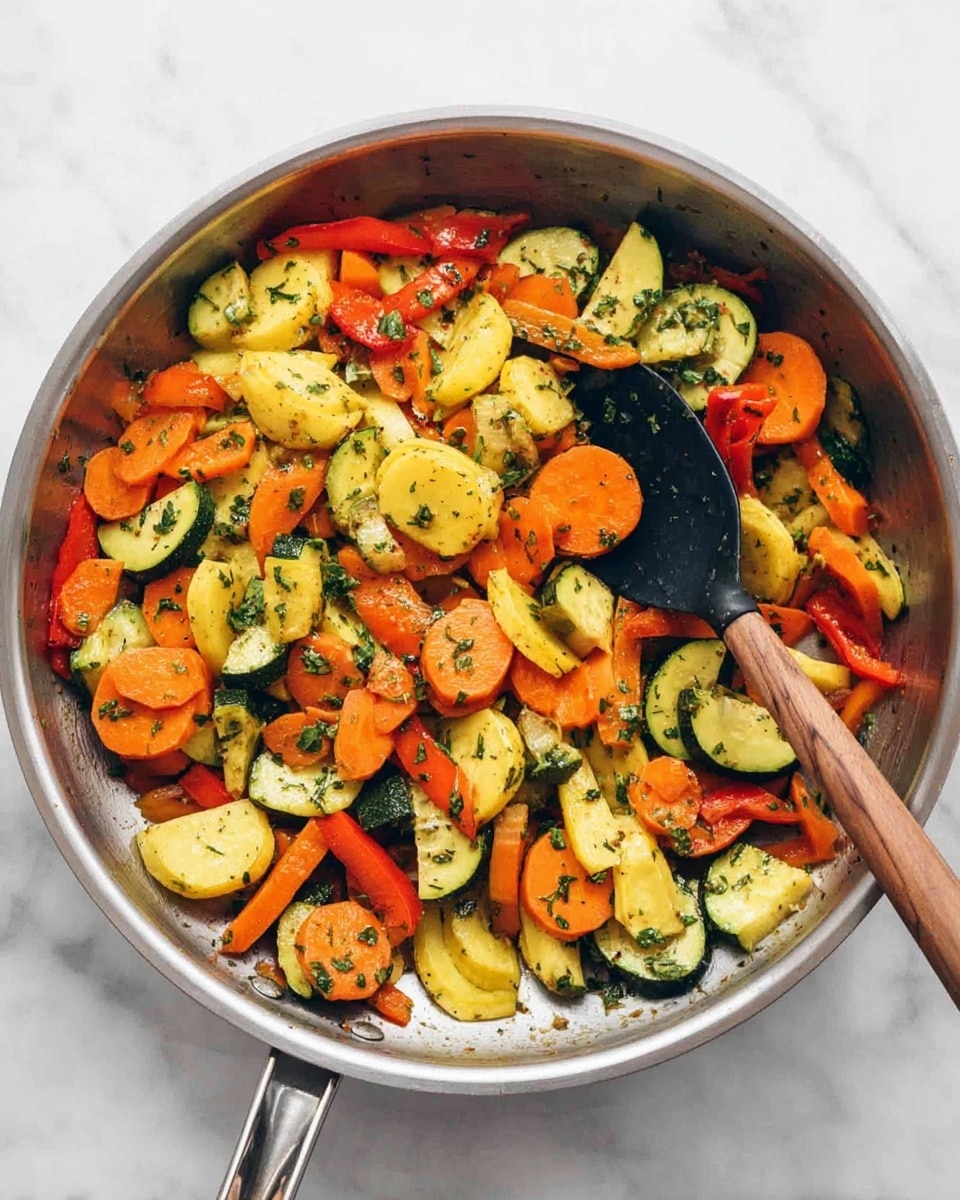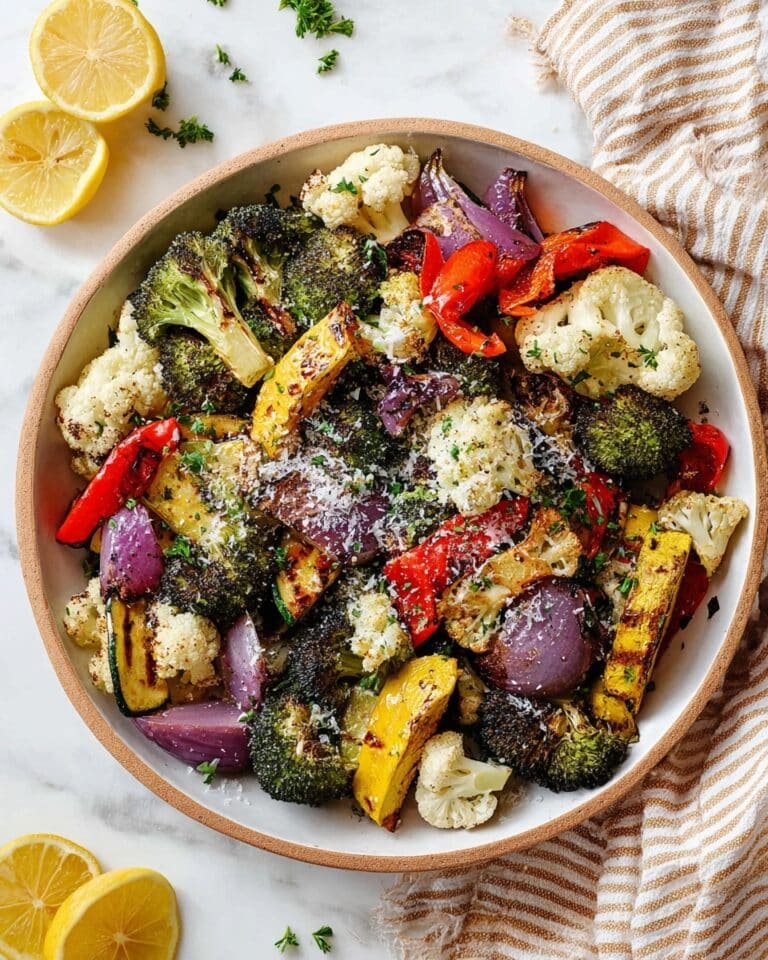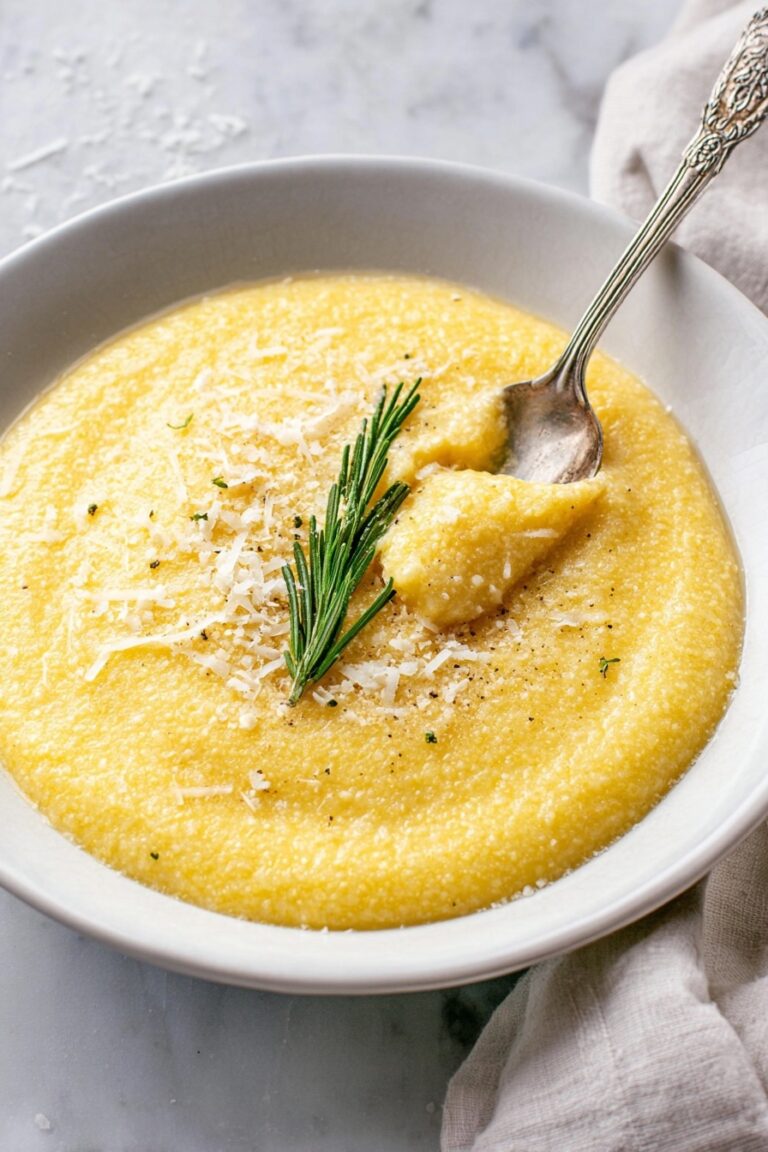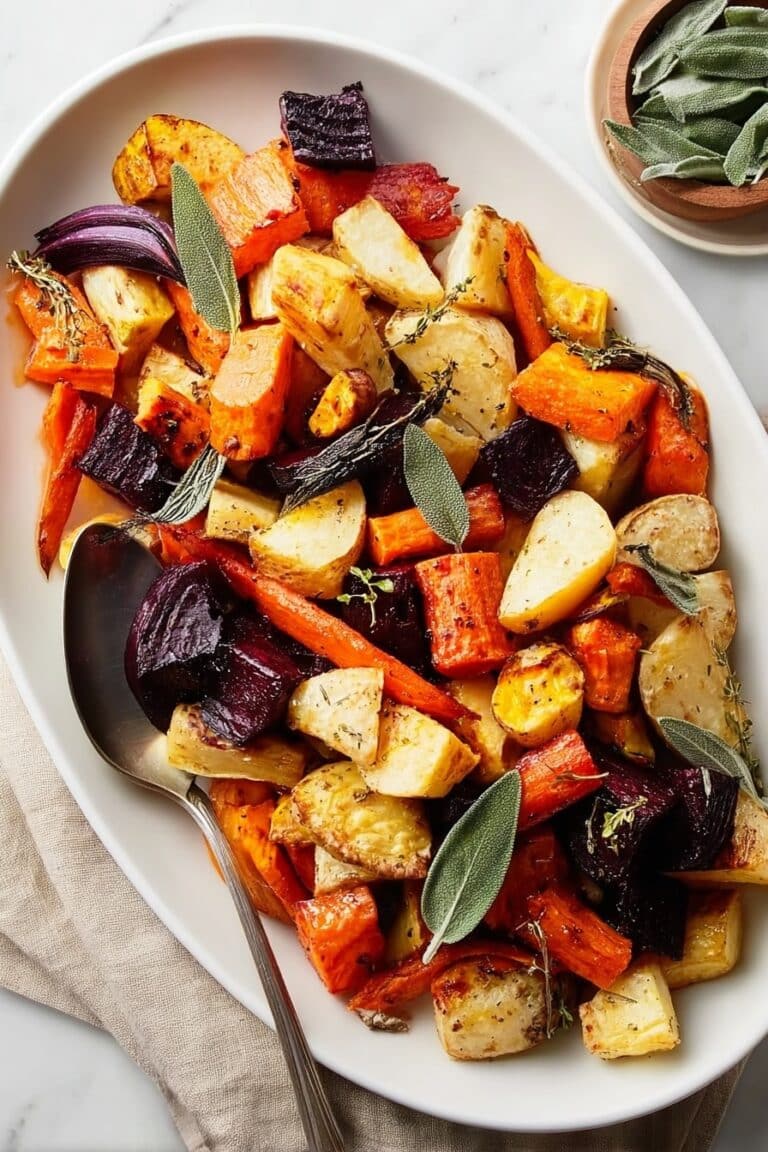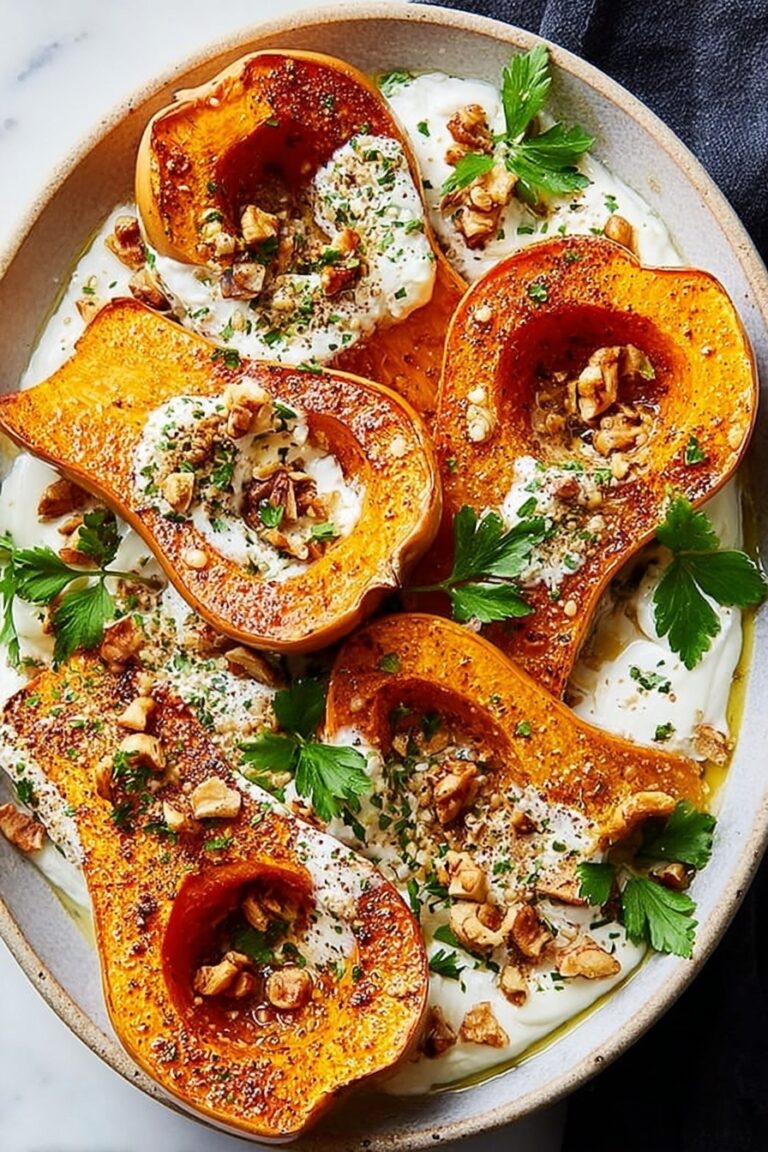Simple Sautéed Vegetables Recipe
If you’re looking for a quick, colorful side dish that feels fresh and wholesome, this Simple Sautéed Vegetables Recipe is an absolute must-try. I came across this mix when I needed something easy that still packed in a variety of flavors and textures—and honestly, it quickly became one of my go-to dishes. The combination of carrots, zucchini, yellow squash, and red bell pepper creates a vibrant medley that’s as tasty as it is visually appealing. It’s a perfect way to add a healthy boost to any meal without spending hours in the kitchen.
What I really love about this Simple Sautéed Vegetables Recipe is how versatile it is. Whether you’re serving it alongside grilled chicken or mixing it into rice or quinoa bowls, it adapts flawlessly. Plus, the method is forgiving—even if you’re not a seasoned cook, you’ll find it straightforward and satisfying. The subtle herbs and a pat of butter at the end tie everything together beautifully, making the veggies pop with flavor without overpowering their natural goodness.
Why This Recipe Works
- Balanced Flavors: The blend of herbs and butter enhances the natural sweetness and earthiness of the vegetables perfectly.
- Quick & Easy: It requires minimal prep and cooks in just about 10 minutes, ideal for busy weeknights.
- Versatile Ingredients: You can swap in different veggies based on season or preference, making it adaptable and customizable.
- Texture Perfected: Cooking the veggies just until they start to soften keeps that lovely bite, preventing mushiness.
Ingredients & Why They Work
The selection of fresh veggies here isn’t just colorful—they each bring something unique to the table. I always recommend picking firm, bright vegetables, as freshness really makes a difference for this Simple Sautéed Vegetables Recipe. If you find a really vibrant red bell pepper at the market, grab it—it adds a nice sweet crunch that complements the softer squash and carrots.
- Carrots: Their natural sweetness intensifies when sautéed and adds a lovely crunch if you don’t overcook them.
- Zucchini: A tender veggie that soaks up flavors well but cooks quickly, so it’s added after the carrots.
- Yellow Squash: Adds mild flavor and a smooth texture that balances the sharper taste of the bell pepper.
- Red Bell Pepper: Brings vibrant color and a sweet, juicy punch that livens up the whole dish.
- Cooking Oil: A neutral oil like canola or vegetable oil heats up quickly and prevents sticking without overpowering flavors.
- Dried Basil & Oregano: These herbs give a gentle herbal note that complements the veggies without dominating them.
- Garlic Powder: Adds subtle depth and warmth; garlic fresh or powdered both work, but powdered is easier for quick cooking.
- Salt & Black Pepper: Essential seasoning to bring out the natural flavors, adjusted to taste at the end.
- Butter: Melts into the warm veggies, giving them a silky finish and that comforting richness.
- Fresh Parsley (optional): A sprinkle fresh off the stove adds a pop of color and fresh herbal brightness.
Tweak to Your Taste
What’s great about this Simple Sautéed Vegetables Recipe is how easily it bends to your mood or pantry situation. Over time, I’ve played around with the herbs and veggies—sometimes swapping fresh basil when it’s in season or adding a pinch of red pepper flakes for a little kick. You should definitely feel free to customize it based on what you love!
- Variation: I sometimes add thinly sliced mushrooms or snap peas for extra texture, and it never disappoints.
- Dietary tweak: For a vegan version, swap the butter for a drizzle of olive oil or a plant-based butter alternative.
- Seasonal swap: Roasted sweet potatoes or asparagus in spring can add new flavor layers, mixing up the routine.
- Flavor boost: A splash of lemon juice or balsamic vinegar right before serving brightens everything beautifully.
Step-by-Step: How I Make Simple Sautéed Vegetables Recipe
Step 1: Prep Your Veggies Neatly
Start by peeling and slicing your carrots into thin rounds or half-moons, so they cook evenly and quickly. Then chop the zucchini and yellow squash into similar half-rounds—this consistency helps everything cook at the same pace. Slice your red bell pepper into strips or bite-sized pieces. I like to prep everything first so when I’m at the stove, it’s a smooth process and nothing gets overcooked waiting around.
Step 2: Heat That Skillet Properly
Place your skillet on medium-high heat and allow it to get nice and hot before adding the oil. The oil should shimmer but not smoke—that’s the sweet spot. Adding veggies to a properly heated pan helps them sauté instead of steam, giving better texture and flavor. Toss in the carrots first; their firmness means they need a little head start to get tender yet still hold some crunch.
Step 3: Add the Rest with Herbs and Seasoning
After 2-3 minutes with the carrots, add the bell pepper, zucchini, and yellow squash along with the dried basil, oregano, and garlic powder. Stir frequently but gently—this helps everything cook evenly without breaking up the softer veggies. You want the veggies to soften just enough to tame their rawness but still keep a satisfying bite. This step usually takes another 2-3 minutes.
Step 4: Finish Off with Butter and Seasoning
As soon as the veggies start to soften, take the skillet off the heat and drop in the butter. Toss the vegetables quickly so the butter coats every piece—this adds richness and a silky feel that brings the whole dish together. Taste and season with salt and freshly cracked black pepper, adjusting to your preference. If you have fresh parsley, sprinkle it on at the end for a burst of color and freshness.
Pro Tips for Making Simple Sautéed Vegetables Recipe
- Preheat the Pan Thoroughly: A really hot pan helps you get a light caramelization and prevents soggy vegetables.
- Don’t Overcrowd: Cook in a single layer—or in batches if needed—to avoid steaming and promote better texture.
- Cut Evenly: Uniform pieces ensure everything cooks evenly without some veggies getting mushy while others stay crunchy.
- Butter Off the Heat: Adding butter once off the heat preserves its color and flavor without burning it.
How to Serve Simple Sautéed Vegetables Recipe
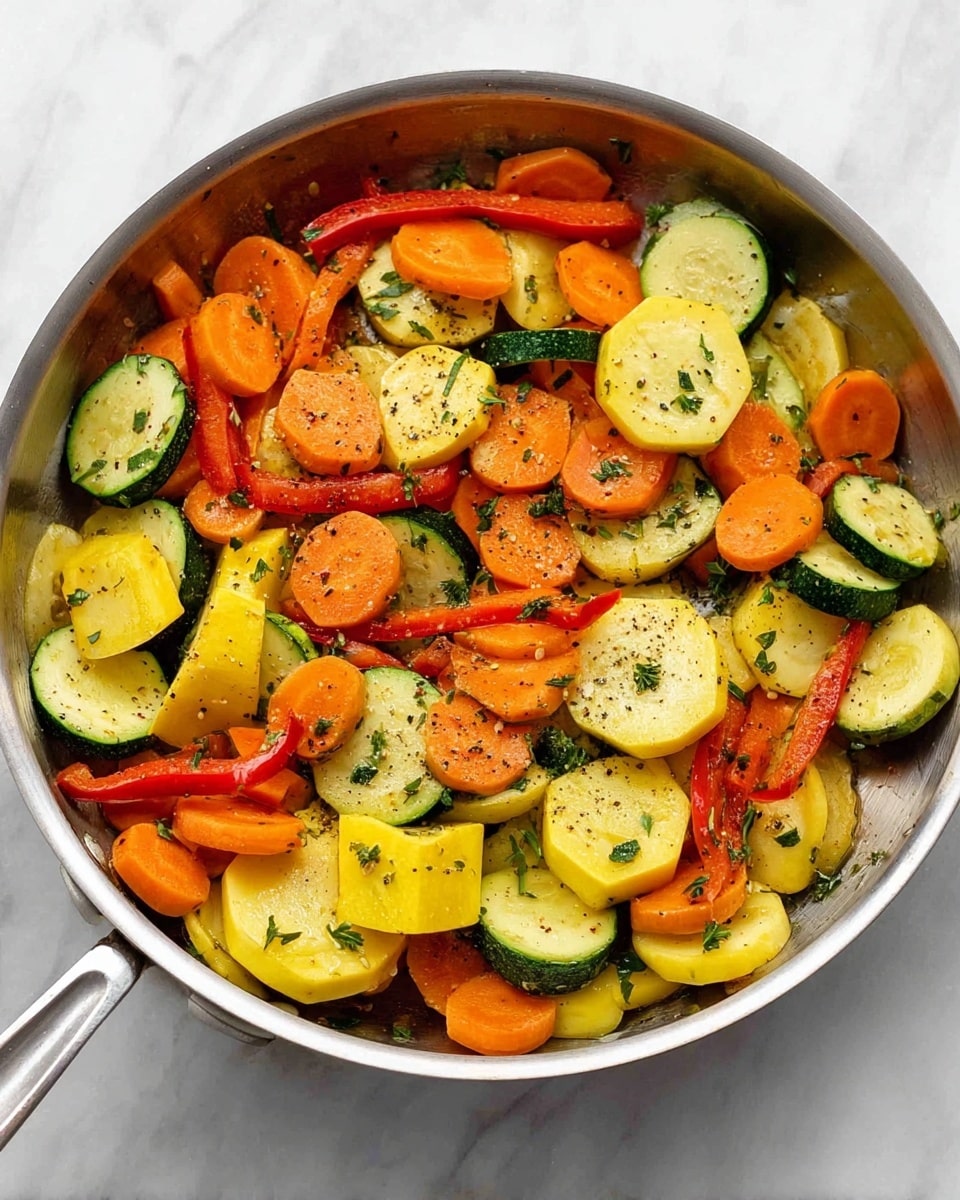
Garnishes
I’m a big fan of finishing this dish with a sprinkle of fresh parsley—it brightens everything up and adds a bit of herbal zing. Sometimes I also add a light grate of Parmesan or a squeeze of lemon juice, depending on the mood. Fresh herbs like thyme or even a pinch of chili flakes can also add a fun twist.
Side Dishes
This recipe pairs beautifully with grilled chicken, baked salmon, or your favorite grain bowl. On busy weeknights, I often serve it alongside some roasted potatoes or simple couscous to round out the meal. It also makes a great topping for warm quinoa or rice.
Creative Ways to Present
For a dinner party, I like to serve these sautéed veggies in colorful bowls with a sprinkle of toasted nuts or seeds on top for texture and extra flavor. Another fun idea is rolling them inside warm tortillas with some cheese and a drizzle of avocado crema for a veggie wrap. Presentation is all about the vibrant colors, so keep those veggies bright and fresh!
Make Ahead and Storage
Storing Leftovers
I store leftovers in an airtight container in the fridge and they usually stay fresh for 3 to 4 days. Reheating is easy and I find the veggies retain their flavor and texture better if I gently warm them rather than microwaving too long.
Freezing
While I personally don’t freeze these veggies because they can get a bit watery when thawed, you could freeze them if you plan to use them in cooked dishes later—just be aware the texture may soften after thawing.
Reheating
The best way I’ve found to reheat is gently tossing the veggies in a hot skillet with a little bit of oil or butter—this refreshes the texture and adds a bit of that freshly-cooked flavor back.
FAQs
-
Can I use fresh herbs instead of dried in this recipe?
Absolutely! Fresh herbs like basil or oregano can be swapped in, but add them toward the end of cooking or as a garnish to preserve their bright flavor. Since fresh herbs are milder than dried, you might want to use about three times as much.
-
What oil works best for sautéing vegetables?
I usually use a neutral oil like vegetable, canola, or grapeseed because they handle higher heat without burning. Olive oil works too, but keep the heat medium to avoid smoking.
-
Can I add other vegetables to this recipe?
Definitely! This recipe is great for customization. Try adding mushrooms, snap peas, or even broccoli florets—just adjust the cooking time so all veggies are tender but not mushy.
-
How do I prevent the vegetables from getting soggy?
Make sure your pan is hot before adding veggies and don’t overcrowd the skillet. Cook in batches if needed to keep high heat and a nice sauté texture rather than steaming.
-
Is this recipe good for meal prep?
Yes! It stores well in the fridge and reheats nicely in a pan, making for a quick, nutritious side ready to complement your meals throughout the week.
Final Thoughts
I’ve made this Simple Sautéed Vegetables Recipe countless times, and honestly, it never gets old. It’s a little thing that adds so much goodness to my meals, and I hope it will do the same for you. Next time you want a fresh, easy dish that boosts any plate, come back to this recipe—it’s simple, reliable, and just downright comforting in the best way. Give it a try, and I bet you’ll be reaching for these veggies again and again!
Print
Simple Sautéed Vegetables Recipe
- Prep Time: 10 minutes
- Cook Time: 10 minutes
- Total Time: 20 minutes
- Yield: 4 servings
- Category: Side Dish
- Method: Frying
- Cuisine: American
- Diet: Vegetarian
Description
A quick and easy recipe for simple sautéed vegetables featuring carrots, zucchini, yellow squash, and red bell pepper, seasoned with herbs and finished with butter and fresh parsley for a flavorful, tender side dish.
Ingredients
Vegetables
- 3 carrots
- 1 zucchini
- 1 yellow squash
- 1/2 red bell pepper
Seasonings and Oil
- 1 Tbsp cooking oil
- 1/4 tsp dried basil
- 1/8 tsp dried oregano
- 1/8 tsp garlic powder
- 1/8 tsp salt
- 1/8 tsp freshly cracked black pepper
Finishing Touches
- 1 Tbsp butter
- 1 Tbsp chopped fresh parsley (optional)
Instructions
- Prepare the vegetables: Peel and slice the carrots. Chop the zucchini and yellow squash into half-rounds. Slice the red bell pepper.
- Heat the skillet: Place a skillet over medium-high heat. Once hot, add the cooking oil and swirl to coat the surface evenly.
- Sauté the carrots: Add the sliced carrots to the skillet and sauté for about 3 minutes until they begin to soften.
- Add remaining vegetables and seasonings: Add the bell pepper, zucchini, yellow squash, dried basil, oregano, and garlic powder to the skillet. Continue sautéing for 3 more minutes, until the vegetables begin to soften but are still crisp.
- Finish with butter and seasoning: Remove the skillet from heat. Add the butter and toss vegetables until melted and coated evenly. Season with salt and freshly cracked black pepper, tasting and adjusting as needed.
- Garnish and serve: Sprinkle chopped fresh parsley over the vegetables just before serving.
Notes
- For a dairy-free version, substitute butter with a non-dairy margarine or additional cooking oil.
- Adjust herbs to preference, adding fresh herbs if available for a brighter flavor.
- Do not overcook to preserve vegetable texture and nutrients.
- Use a non-stick or well-seasoned skillet to prevent sticking.
- Can be served warm as a side dish to complement many main courses.
Nutrition
- Serving Size: 1 serving
- Calories: 80 kcal
- Sugar: 5 g
- Sodium: 150 mg
- Fat: 5 g
- Saturated Fat: 2 g
- Unsaturated Fat: 3 g
- Trans Fat: 0 g
- Carbohydrates: 8 g
- Fiber: 3 g
- Protein: 1 g
- Cholesterol: 7 mg

